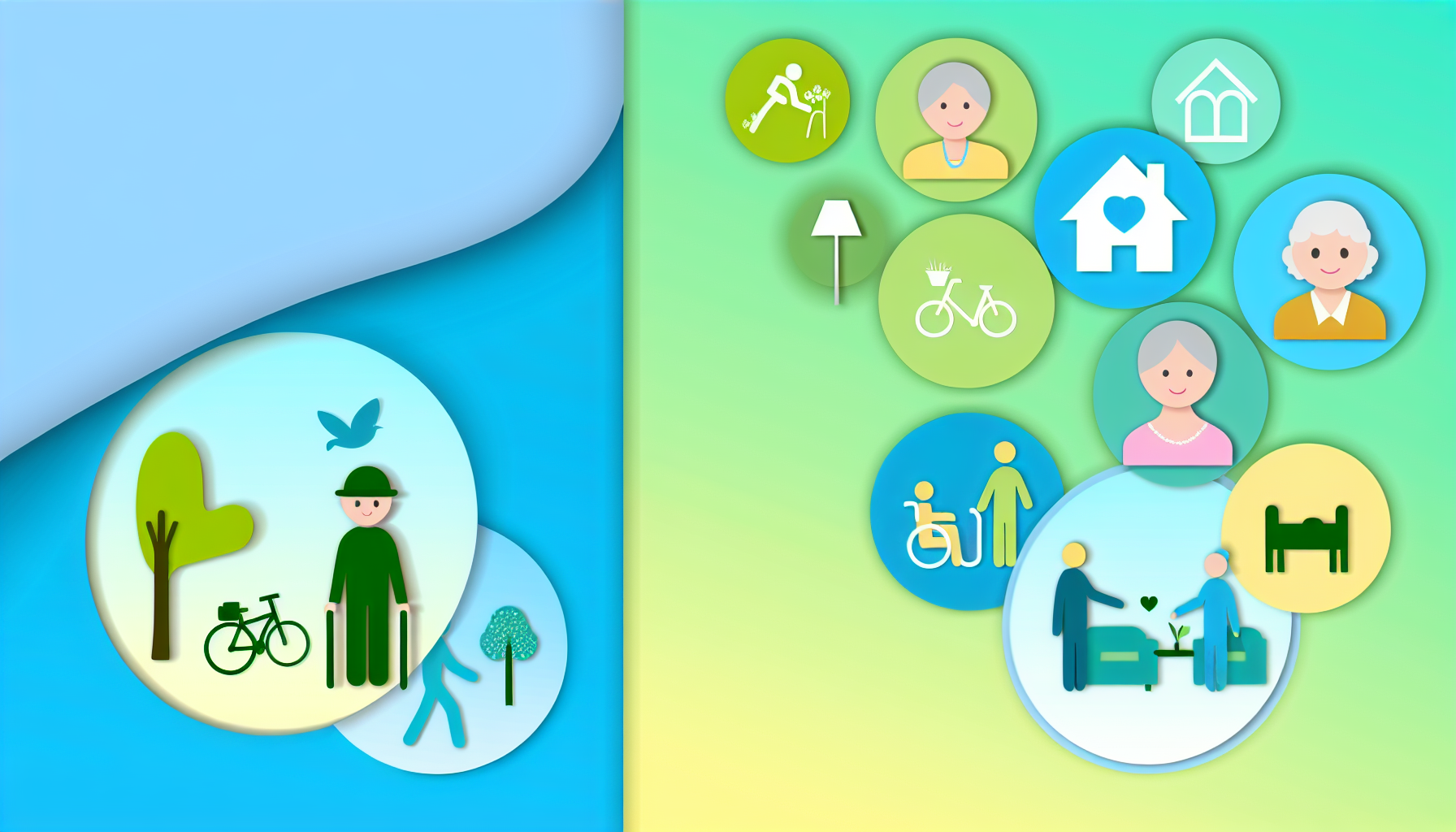 Back to
blogs
Back to
blogs

Comparing independent living and assisted living options.
Key differences between independent and assisted living communities.
Senior Living Options
Choosing between independent living vs assisted living is a significant decision for older adults and families exploring senior living options. Both settings provide unique lifestyles, amenities, and care levels, suited for different health, independence, and socialization needs. Understanding the fundamental differences helps ensure your choice aligns with long-term preferences, future health requirements, and budget.
| Pros | Cons | |
|---|---|---|
| Independent Living | - Maximum autonomy and privacy - Vibrant social environment and freedom from home maintenance - Flexible services with minimal assistance needed | - No personal care or health support provided - Residents must be generally healthy and independent - May require moving again if care needs increase |
| Assisted Living | - Daily support for personal care needs - Safety features like emergency alert systems and 24/7 staff - Social and recreational programming | - More structured routines - Higher monthly costs due to increased care - Less privacy than independent living |
| Feature | Independent Living vs. Assisted Living: Key Differences | Alternatives (e.g., In-Home Care/Nursing Home) |
|---|---|---|
| Monthly Cost | Independent Living: $1,500 to $3,500/month (includes rent, some utilities, basic amenities) Assisted Living: $3,500 to $6,000/month (includes care services, meals, and amenities) | In-Home Care: $30–$50/hour (costs vary widely) Nursing Home: $7,000–$9,500/month (includes 24/7 medical care) |
| Care Level | Independent Living: No hands-on personal care, designed for active, self-sufficient seniors. Assisted Living: Support with ADLs, medication management, and more staff oversight. | In-Home Care: Customizable care, but may lack social engagement. Nursing Home: Highest care level, suited for complex medical needs. |
| Social Activities | Extensive recreation and wellness programs offered in both; independent living may be less structured. | In-home care depends on companion availability; nursing homes typically provide activities, but setting is more clinical. |
| Apartment Style | Independent Living: Apartments, cottages, or condos. Assisted Living: Studios or 1-2BR apartments with accessible bathrooms. | In-home: Remain in private residence. Nursing home: Private or shared rooms, clinical environment. |
| Emergency Support | Independent Living: On-site staff, emergency pull cords; less supervision. Assisted Living: 24/7 staff, frequent wellness checks. | In-Home: May require medical alert devices; nursing provides continuous oversight. |
Q: What is independent living vs assisted living?
A: Independent living is designed for active, healthy seniors who want to downsize home responsibilities and enjoy social opportunities, but do not require help with daily living activities. Assisted living provides a similar community setting with extra support for bathing, dressing, meals, and medication, ideal for those needing some assistance.
Q: How does it compare to alternatives?
A: Compared to in-home care, both independent and assisted living offer more social opportunities and structured activities. Nursing homes provide a higher level of medical care, but at greater cost and with a more clinical environment.
Q: What are the typical costs?
A: Independent living typically ranges from $1,500–$3,500 per month, depending on location and amenities. Assisted living generally costs $3,500–$6,000 monthly, plus fees for additional care services. Costs vary by state, community, and level of care.
Q: Is this option right for families?
A: Independent living is best for active seniors with minimal health needs. Assisted living suits those needing daily help but not full-time nursing. Evaluate your or your loved one's current health, social preferences, and projected care needs before deciding. Consider touring communities and speaking with administrators for personalized advice.
Q: Are any services covered by insurance?
A: Most independent living costs are private pay; standard health insurance usually doesn't apply. Some long-term care insurance policies and Medicaid may help pay for assisted living if requirements are met. Always check plan details and ask potential communities for guidance on coverage.
Deciding between independent living vs assisted living is a pivotal step in ensuring the health, safety, and happiness of older adults. Weighing the key differences helps families make informed choices that support current lifestyles and future needs. Still have questions? Explore our expert resources for deeper guidance or visit the National Institute on Aging for trusted information on senior living options.
Independent living vs assisted living refers to two senior living options with different care levels. Independent living is for healthy, active seniors who need minimal assistance, while assisted living provides help with daily tasks for those who require more support.
Both offer structured social options and amenities, but in-home care is more personalized while nursing homes provide advanced medical supervision.
Independent living costs $1,500–$3,500 per month on average; assisted living ranges from $3,500–$6,000 monthly, depending on care level and services.
Independence is ideal for healthy seniors wanting an active lifestyle; assisted living is better if daily support or supervision is needed.
Long-term care insurance or Medicaid may offset assisted living costs in some cases, but most independent living expenses are private pay.